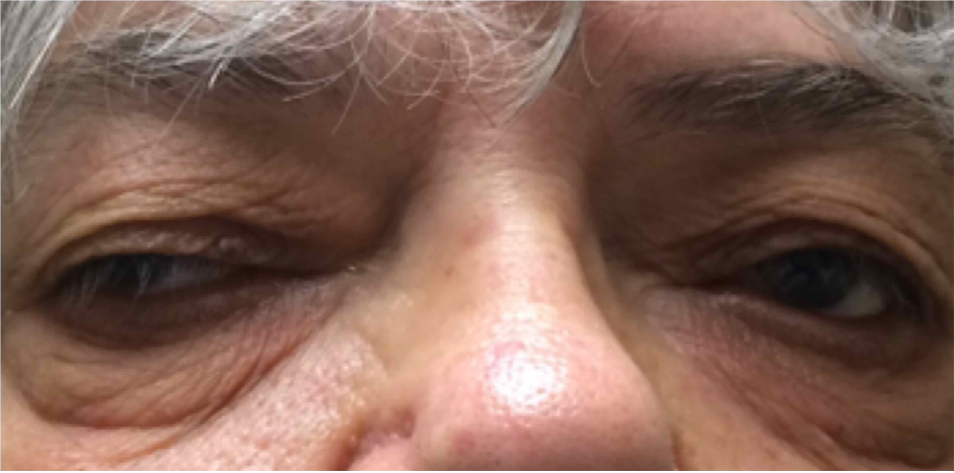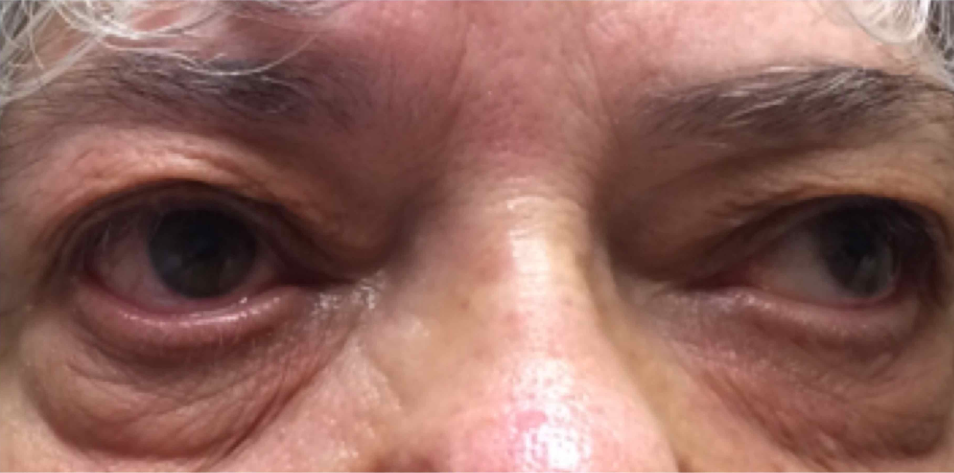Diagnosing the Impaired Neuromuscular Transmission of Ocular Myasthenia Gravis
A 72-year-old cis man presents with several weeks of intermittent double vision that is worse in the evening. Occasionally it happens during the day, but it improves after a nap. Covering either eye improves the symptoms. He denies eye pain, changes in visual acuity, dysphagia, shortness of breath, or weakness. His initial exam is normal.
After sustained upgaze of 60 seconds, he develops right eye exotropia and ptosis. This reproduces his double vision. Placing an ice pack over the eye for two minutes results in complete resolution.
A diagnosis of myasthenia gravis is confirmed with positive serum anti-acetylcholinesterase receptor antibody (AChR) testing. Treatment with prednisone and pyridostigmine is started immediately for symptomatic relief.
Ocular myasthenia gravis is an acquired impairment of neuromuscular transmission that presents as fatigable pupil-sparing third nerve palsy. It is seen primarily in young women and older men and can be associated with thymoma.
Further Reading
Myasthenia Gravis and Congenital Myasthenic Syndromes
Treatment of Myasthenia Gravis
References
Giannoccaro MP, Paolucci M, Zenesini C, Di Stasi V, Donadio V, Avoni P, Liguori R. Comparison of ice pack test and single-fiber EMG diagnostic accuracy in patients referred for myasthenic ptosis. Neurology. 2020 Sep 29;95(13):e1800-e1806. doi: 10.1212/WNL.0000000000010619. Epub 2020 Aug 11. PMID: 32788239.
O’Hare M, Doughty C. Update on Ocular Myasthenia Gravis. Semin Neurol. 2019 Dec;39(6):749-760. doi: 10.1055/s-0039-1700527. Epub 2019 Dec 17. PMID: 31847046.

Kaci McCleary, MD
Hospice and Palliative Care Fellow, OhioHealth
Published September 16, 2022
Want more clinical cases?
Join Figure 1 for free and start securely collaborating with other verified healthcare professionals on more than 100,000 real-world medical cases just like this one.

